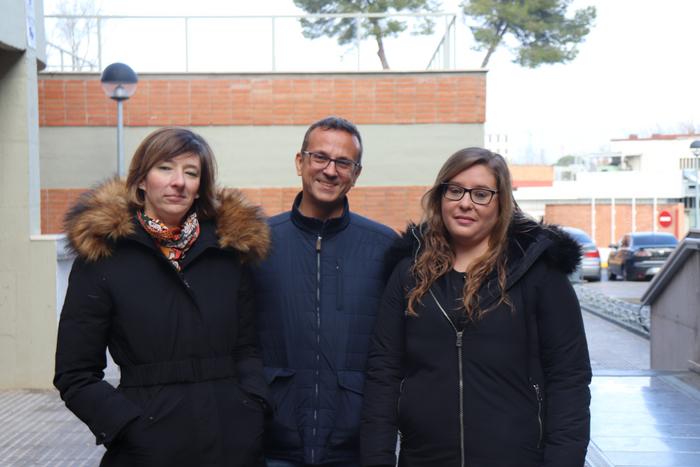A team from the UCO’s Nursing Department has determined the presence of two pain biomarkers and their levels in saliva as a tool to diagnose pain,effectively and non-invasively, in people with dementia and communication problems

Credit: University of Cordoba
A team from the UCO’s Nursing Department has determined the presence of two pain biomarkers and their levels in saliva as a tool to diagnose pain,effectively and non-invasively, in people with dementia and communication problems
Pain is an underdiagnosed and undertreated problem in people with dementia, especially if they are in an advanced stage of the disease that prevents them from being able to communicate effectively. Taking into account that the prevalence of pain and dementia increases with age, and that alleviating this ‘silent’ pain in people with impaired verbal communication is difficult, the search for an alternative and complementary pain diagnosis method has been an objective pursued by research and health personnel.
The Nursing Department at the University of Cordoba has been studying pain in the context of neurodegenerative diseases, such as Alzheimer’s disease, for years. Now they have published a study carried out by researchers Vanesa Cantón, Pilar Carrera, and Manuel Rich, in collaboration with the University of Jaén, showing how saliva may be used as an effective and non-invasive pain detection method in these patients.
In their latest work they describe the levels of sTNFR2 (Soluble Tumor Necrosis Factor Receptor 2) and SIgA (immunoglobulin A) pain biomarkers in saliva samples from patients over 65 years of age diagnosed with moderate-advanced stage dementia and an inability to communicate, compared to a control group of people over 65 years of age without dementia. This tool makes it possible to complement observational pain scales and assess them in a simple and non-invasive way, which could make it easier for health personnel and caregivers to ascertain the patient’s situation, and employ the use of the corresponding analgesia, if necessary, thus improving patients’ quality of life.
sTNFR2and sIgA are related to pain through inflammation, and that inflammatory process is related to dementia.
“The fact that we can determine these biomarkers in saliva is very auspicious, since most of the people from whom we have been able to obtain the samples were in a very advanced state, bedridden with advanced dementia, so the less irritating and invasive it is for the patient to obtain the sample, the better,” explained researcher María Pilar Carrera.
This first determination of pain biomarkers in saliva (it had previously been done using blood or plasma) “helps treat an unresolved problem in patients with dementia, which we consider the fifth vital sign: pain,” pointed out Vanesa Cantón, the article’s lead author.
The results of the test described the levels of these biomarkers, with a decrease in sTNFR2in patients with dementia compared to the control group, which “indicates how inflammation is modulated,” In the case of sIgA, the team observed “an increase in this immunoglobulin in people with dementia, showing that there is an alteration of the immune system response.” Thus, they establish the usefulness of these biomarkers to evaluate the development of the pain process throughout the evolution of the disease and during its moderate-advanced stage.
Until now the usual way to detect pain in patients with reduced communication was using the PAINAD scale, a methodology of pain observation in patients with advanced dementia, recently validated in Spanish by this same research team and based on five behavioral indicators: breathing, vocalization, facial expression, body language and consolability. The saliva biomarkers proposed can now be corroborated with the data obtained through the scale, thus confirming their efficacy.
“This method is very important from the point of view of the quality of life of patients with a disease that has no cure,” the researchers noted. Testing it with a larger sample and in a specific environment, such as a nursing home, could be the next step on the way to implementing the use of this tool.
Reference
Cantón-Habas V, Rich-Ruiz M, Martínez-Martos JM, Ramírez-Expósito MJ, Carrera-González MP. Determination of soluble tumor necrosis factor receptor II and secretory immunoglobulin A in the saliva of patients with dementia. Eur Arch Psychiatry Clin Neurosci. 2023 Oct 14. doi: 10.1007/s00406-023-01693-9.
Journal
European Archives of Psychiatry and Clinical Neuroscience
DOI
10.1007/s00406-023-01693-9
Method of Research
Experimental study
Subject of Research
People
Article Title
Determination of soluble tumor necrosis factor receptor II and secretory immunoglobulin A in saliva of patients with dementia
Article Publication Date
14-Oct-2023




